Ginger root is a fragrant spice that has medicinal properties and is used in cooking and medicine. The plant itself is sometimes used as a decorative culture that is grown in pots and decorates the interior of the house. If you wish to grow ginger, you can independently, because there is nothing complicated in this. On how to grow ginger, we will tell in this article.
Brief description of the plant
Ginger is a long-term culture from the family of ginger and is a rhizable plant living in a tropical climate. In their own way, ginger resembles a low bush, although it is considered a herbal culture. The homeland of this spice is South Asia, but at present the plant is widely distributed in Australia, India, China, Indonesia, on Jamaica and Barbados, as well as in West African countries.
The ginger plant has long oblong leaves, some of them are rolled into thin tubes and mimic stems. All parts of culture, both overhead and underground, have a pleasant aroma, something resembling the smell of lemon. The root of ginger is also a sharp taste and has a warming effect on the body.
Preparation of ginger to landing
For planting culture most often use rhizome. It is believed that the ginger can be multiplying and in a seed way, but in the conditions of our country such a method is practically impossible. In addition, vegetative reproduction gives a greater guarantee that the new plant is adaptable in the soil.
To put the ginger in my home or house in a flower pot, you should purchase a fresh root in the store or on the market. Please note that young roots are suitable for breeding culture. It is easy to identify them in appearance: they have a flat smooth surface and a pleasant light golden shade. Watch that the planting material was not damaged and did not look shy and sluggish.
Before growing ginger from the root, we should prepare landing material. The root must be immersed in a little warm water and leave it there at least 24 hours. During this time, the kidney, from which new sprouts will subsequently crumble, will have to swell. It is worth noting that it does not make sense to plant the root, it is possible to divide it into several parts and grow 3-4 plants or even more. The most important thing is that the root fragment, which you will plant, had several kidneys on itself. If you can cut the ginger into several parts, all sections of the sections need to be treated with charcoal or ash, to avoid the development of diseases and rot on damaged areas.
Features of Ginger Growing in Open Ground
Choosing a place and time planting culture
In southern countries, where ginger is grown for industrial purposes, its development time from the moment of planting before digging roots is about 6-12 months. In Russia, the period of cultural culture ranges from 8 to 9 months.
The roots of the plant are sitting for the germination of seedlings in about January or in February, and in the spring, from April to May, the culture is transplanted to the garden. It is desirable that the open soil has been protected by film shelter.
As for the place of landing, the ginger prefers the sunny plots, because it is a southern thermo-loving plant. However, under the scorching sun, it is also not recommended to plant it, it is desirable that a certain part of the day on the garden with ginger was a light shadension.
Ginger also does not like a strong wind, so take care, so that the site is not very blocked and, if necessary, provide an additional windproof plant. Since the climate of our country is rather severe for southern plants, ginger is recommended not to grow on open beds, but in greenhouses or in greenhouses. In addition, such structures make it possible to create the most suitable conditions for culture.
In the event that the ginger is divorced as a room plant and grows in flower pots, it is possible to carry out the containers for the summer or placed in a greenhouse.
Soil preparation for ginger
With the cultivation of ginger in the country, it is necessary to properly prepare the soil for culture. The plant loves fertile, nutrient and light soil, into which air and moisture penetrates well. It is important not to forget about the drainage that will take excess water and not gave root. To prepare the appropriate composition of the soil for the cultivation of ginger, mix 1 part of the turf with 2 parts of the leaf humus and 1 part of small river sand.
The depth of the ginger pit should be approximately 20 cm. Digging it, do not forget to immediately make drainage. To do this, at the bottom of the deepening, pour 2 cm of fine gravel, cover it 2 cm of sand, and then plant a plant, falling asleep to the hole in advance prepared soil.
Ginger landing for bed
In about April, the prepared parts of ginger roots can be planted on the site. As we said earlier, the soil can be protected from wind and cold, as well as from scoring sunlight. Blowing the roots of the plant is required by about 2 cm, in addition, the soil before landing should be sufficiently humid.
Approximately 1-1.5 months, the culture will give the first shoots. It is worth noting that ginger grows pretty quickly and actively increasing the green mass, so it is important to provide a timely and abundant watering plant. Constantly check the soil in the place where culture grows, the land there should not be over. In addition to watering, the soil also needs loosening, which must be carried out the next day after irrigation. Swimming will make the soil porous, as a result of which a sufficient amount of oxygen will fall to the roots of the plant.
It is possible to grow ginger in a light shadension, but you cannot forget about regular irrigation. By the way, it is advisable to produce moisture to produce not only under the root of the plant, but also spray the leaves from the spray gun. If culture grows in a greenhouse, you need to follow the maintenance of air humidity at the proper level. Ginger harvest is preferably in the evening, especially if it grows in a sunny place. Water, falling on the leaves, actually act like lens, and sun rays in this case can leave burns on the foliage.
Ginger fertilizer
An important condition for the cultivation of ginger are timely feeding. This culture reacts very well to fertilizers, which are taken into the soil once every 10 days, starting from the time the ginger will germinate. In the first months of development, the culture is fed by a cowboy, which is dissolved in water in the proportion of 1:10. Instead of a cowboy, you can use chicken litter and nettle vests that should be alternating with each other. In about August, the ginger begin to fertilize the potassium compositions, which contributes to the intensive development of the root system.
If the ginger is divorced in order to obtain rhizomes, it is not necessary to wait for his blooms at all. On the contrary, with the advent of buds the development of tubers slows down. But if culture is divorced only with a decorative purpose, phosphoric fertilizers can also be used as feeding.
Ginger: harvesting and storage
The rhizomes of ginger begin to dig out from the ground in about the last numbers of September. That culture is ready for harvest, we will indicate the drooping and drying leaves. At this time, it is advisable to reduce the amount of irrigation, and the spraying of foliage should be stopped at all.
As soon as the leaves become yellow and fall, the blisters of ginger are removed from the soil, they paint the ground with them, thin apparent roots are cut off, and then lay the tubers in the sun, so that they lightly dried. Some part of the crop remain the next year to grow a culture from them again. The rest is used in medicinal or culinary purposes.
Store gingerballs preferably in a dry and cool place, for example, in the basement or in the cellar. The storage temperature should not exceed 2-4 ° C. Those who live in the apartment and has no basement, can complete the roots in paper and put on the refrigerator.
Ginger Gorge Pot
Ginger can be grown not only in bed, but also at home, in a flower pot. It is worth noting that such a plant is not always used in food, sometimes it is grown in decorative purposes. Ginger releases fairly attractive large rose-rose flowers. For those who want to grow ginger in a pot, we give several recommendations:
- For planting culture in the pot only young fresh root roots are suitable. Choosing the root, follow, so that there is enough kidneys.
- As in the case of cultivation of culture on the garden, the planting material should be pre-dunk in water temperature. Hold the ginger in the water tank approximately 1-2 days, then his sleeping kidneys awaken much faster.
- Sometimes, laying on the light and warm, the root produces green sprouts. Such a root is ready for landing and does not need soaking.
- Since the rhizomes of ginger greatly grow up, it is necessary to pick up a wide pot for the plant.
- Planting cultures are carried out in the first weeks of spring. The root is plunged into the ground so that the sprouts or kidneys have been directed upwards. The landing depth is no more than 2 cm.
- Sour for landing should be prepared in advance, mixing fertile land with phosphoric fertilizers for root. Before filling the pot of the soil, pebbles should be put on the bottom of the container and pour the sand layer, which will provide a drainage plant. In the absence of drainage, the root plant can simply be controversial.
- As long as the ginger does not release shoots, it is often not necessary to water it. But as soon as green sprouts appear above the surface of the earth, it is necessary to irrigate the culture regularly and in sufficient quantities.
- Throughout the summer every 2 weeks, the plant in the pot needs to be fertilized by complex feeding. In hot and sunny weather, the container with ginger can be placed on a balcony or loggia, transfer to the garden or to a greenhouse. Only under the scaffolding rays should not leave the plant, it needs to provide a small shadension, as well as protection against drafts.
- At the beginning of the fall, the culture should be reached home again. If the ginger is grown as a flower, you need to comply with all the conditions and support the plant in comfort. You do not need to dig up the root from the ground in the fall, let the plant live in a pot of several years. In winter, watering cultures need to be minimized, wait only, so that the land in the pot did not drive and moisturizing it as needed. With the onset of spring, the plant is again beginning to water intensively, adding potash fertilizers to the water for flowering crops.
Useful properties of ginger
Ginger has long been considered a plant that promotes the extension of youth and beauty, as well as maintaining good health. The thing is that the rhizome of ginger is rich in various vitamins and other useful substances. For example, in this plant there are vitamins F, B2, C, B1. In addition to vitamins, in the root can be found magnesium, sodium, phosphorus, calcium, iron, zinc, potassium, as well as many amino acids.
As a medicinal product, the ginger is used to treat a variety of diseases. It is used for such purposes:
- to eliminate pain accompanying arthritis;
- to remove toxins and slags from the body;
- as spasmodics, as well as means for the treatment of meteorism;
- ginger helps to fight nausea;
- it is actively used to treat pains arising during menstruation;
- the plant helps to improve the operation of the digestive system, and also activates the metabolism;
- the root of ginger is considered an immunostimulating agent that enhances the protective functions of the body.
The advantage of such a product is that it does not have allergenic properties, so it is possible to apply it without fear.
To get from ginger maximum benefit, it should be used precisely in a fresh form, since after thermal treatment, the plant loses some of its properties. The method of use of ginger does not represent anything complicated. First you need to cut off the right piece of the root, clean it from the skin, and then finely cut or grate on the grater.
From ginger it turns out excellent tea or lemonade. To brew tea, peeled and grated root should be pouring boiling water and leaving about 30 minutes. For additional taste in tea, you can add lemon or mint.
Ginger is a popular component of various marinades for meat and fish. In the dried form, this root is added to the hot first and second dishes. The plant found its use in confectionery business, with the addition of this product baked cookies, make sweets, sweet syrups and jams.
By the way, the taste of a finished dish will largely depend on what stage the ginger was added. If the root put at the very end of cooking, it will be thin, it is barely catchy. If you add a component at the beginning of cooking, the taste and smell of ginger will be more saturated. By defining, at what stage of cooking, put the ginger into the dish, pay attention to the product characteristics of which you cook. If the fragrance and taste of the main ingredients are not too expressive, add the root at the very end so that it does not interrupt the smell of the dish.


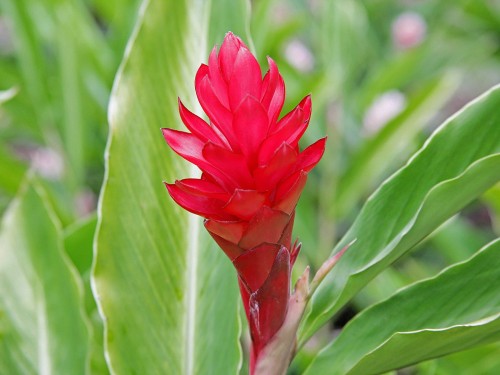
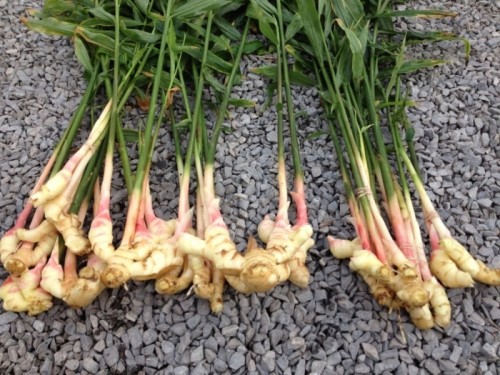
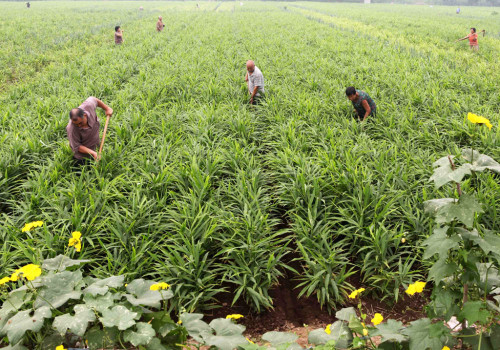
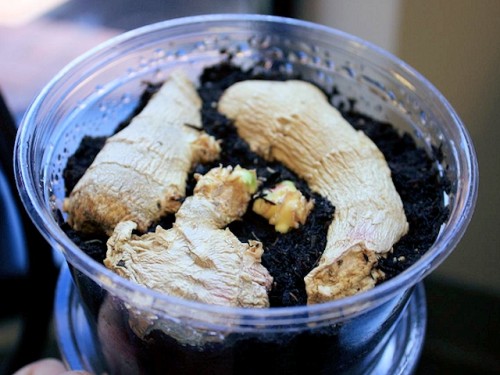
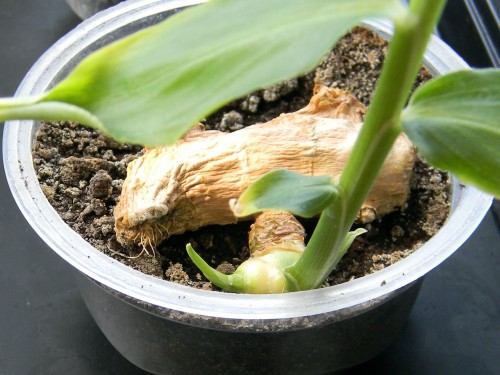
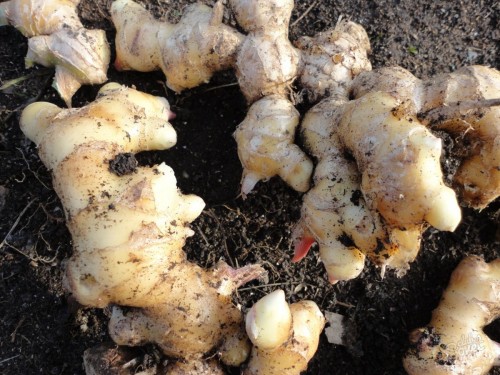
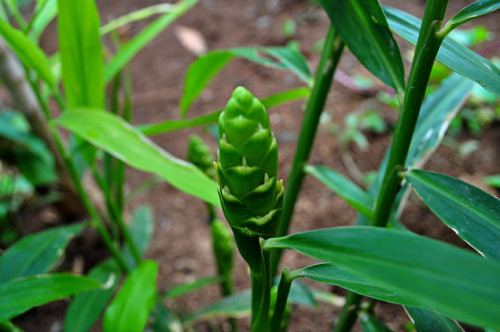
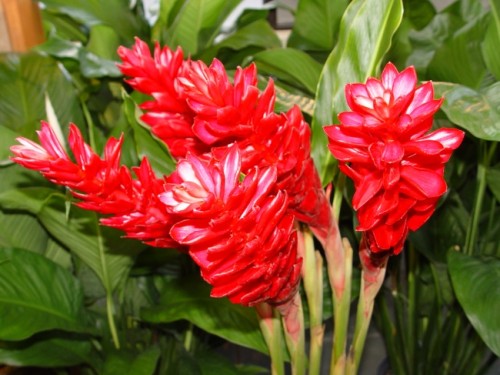













 Start a discussion ...
Start a discussion ...